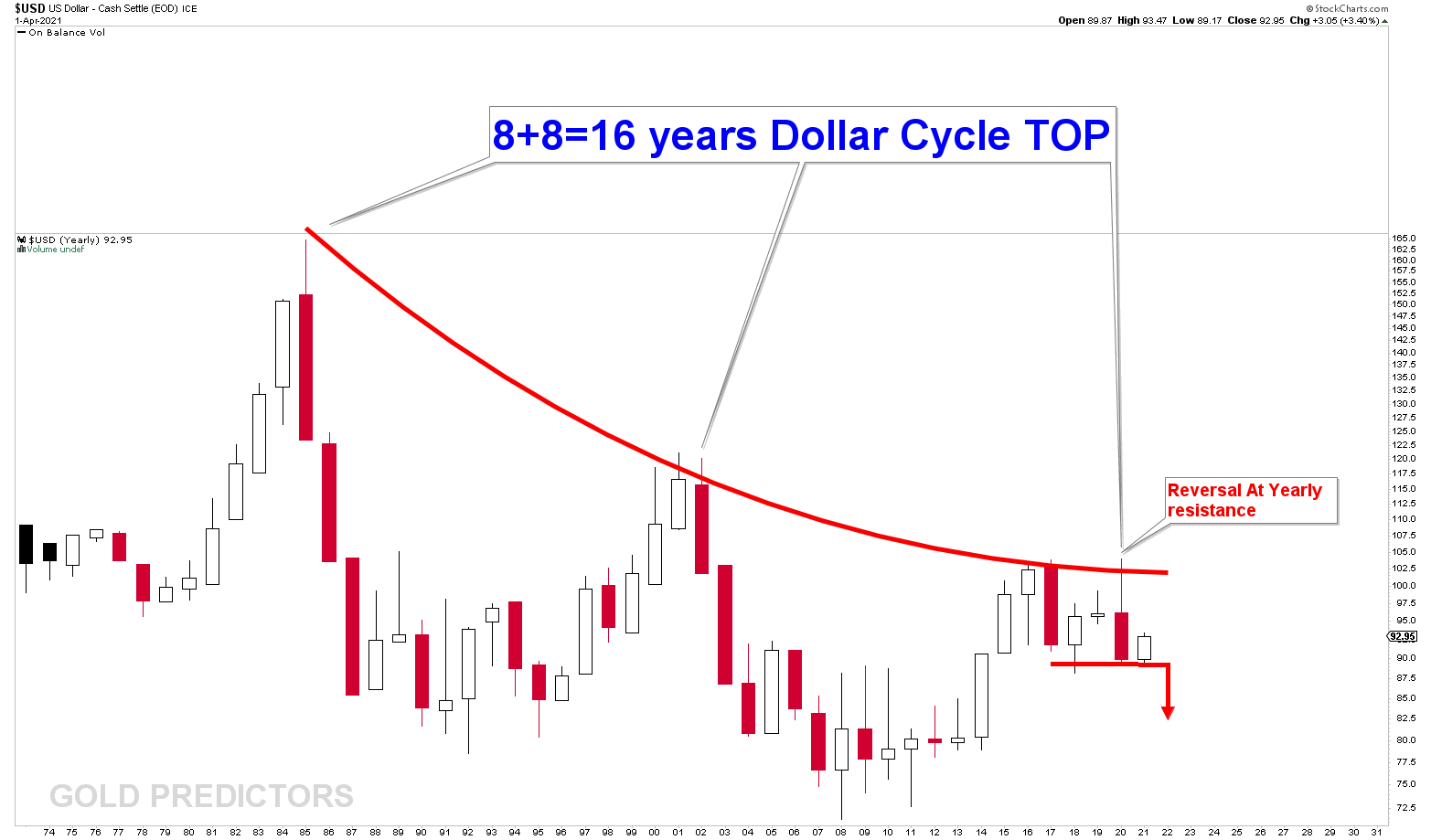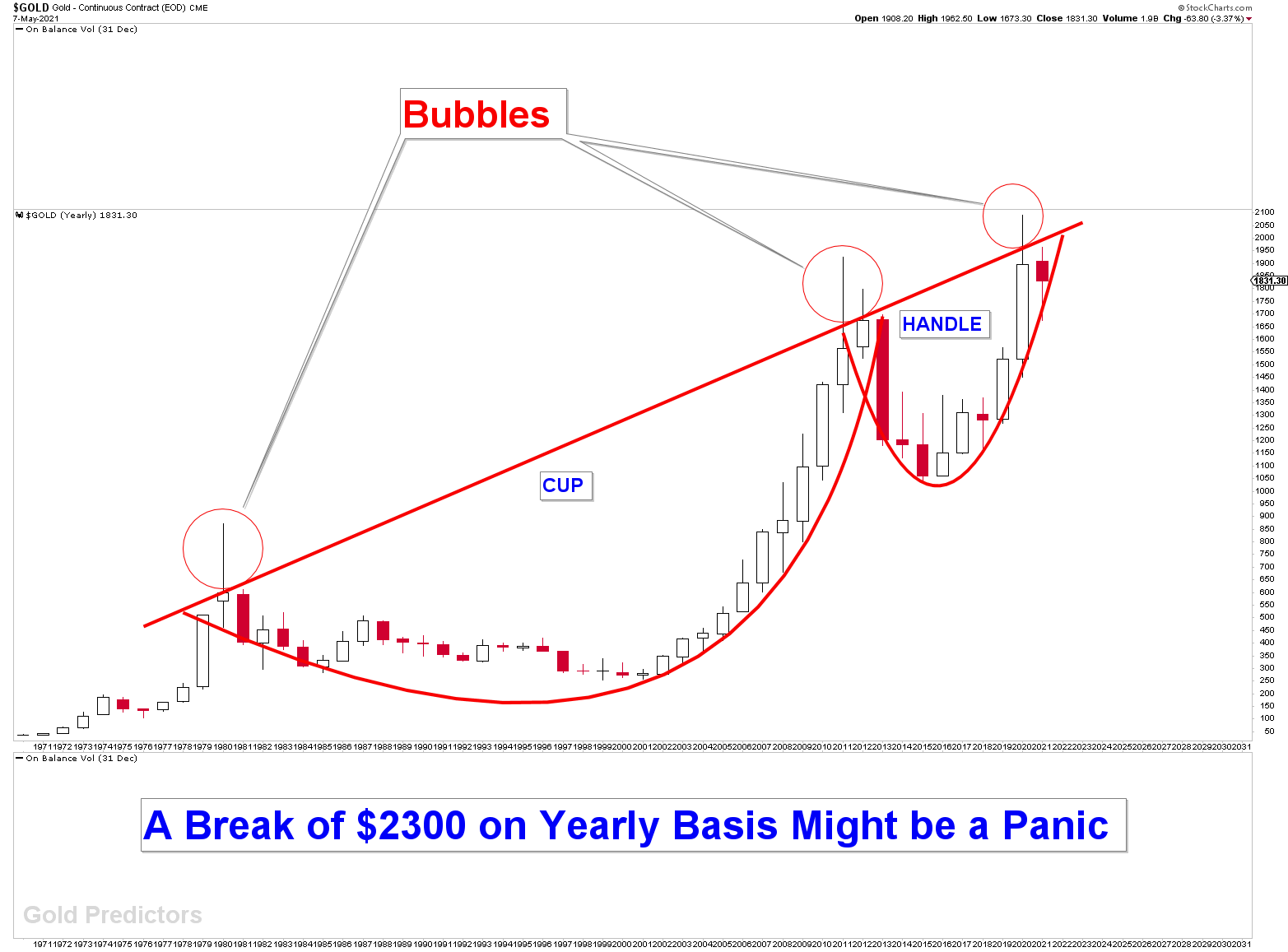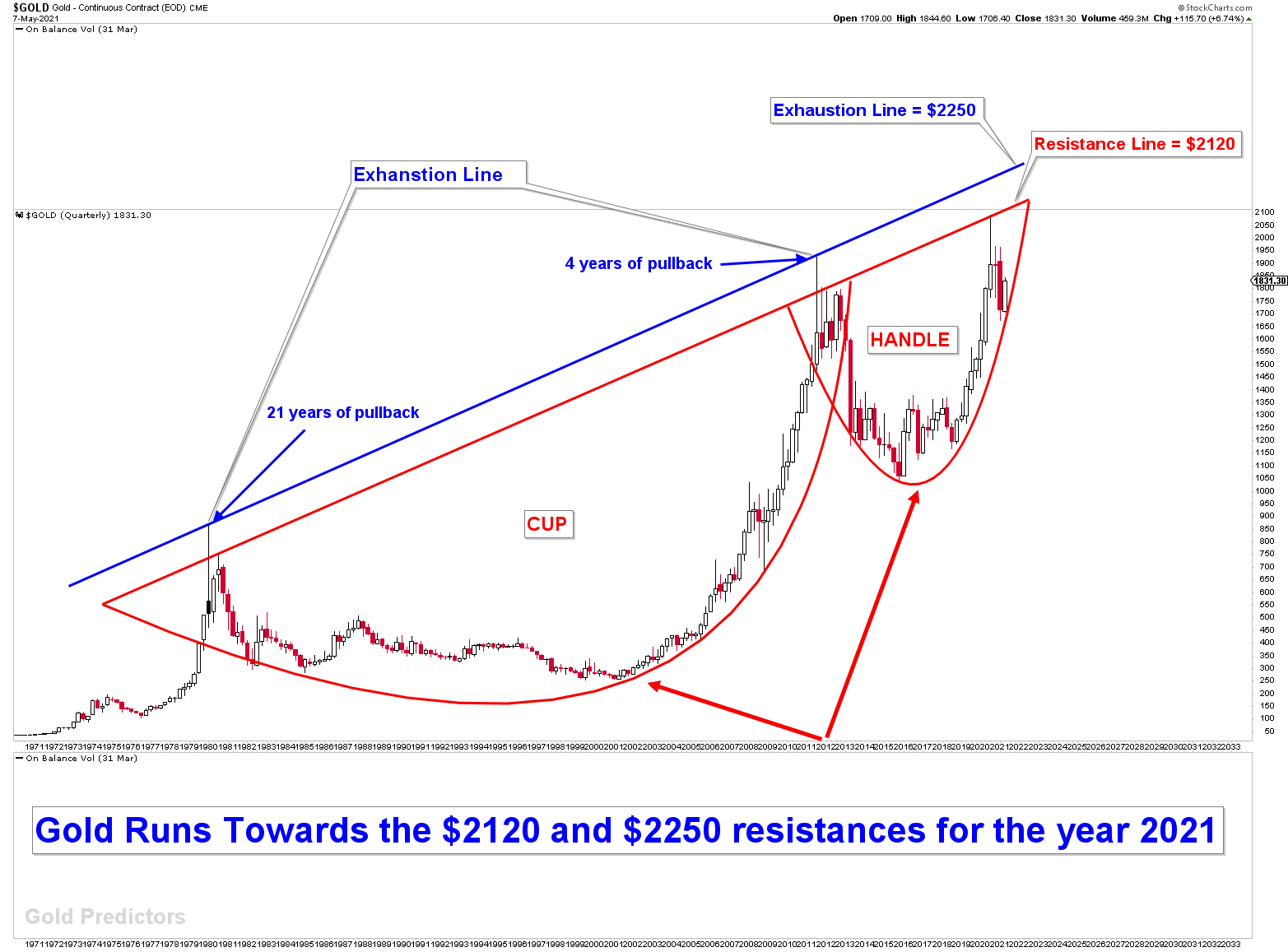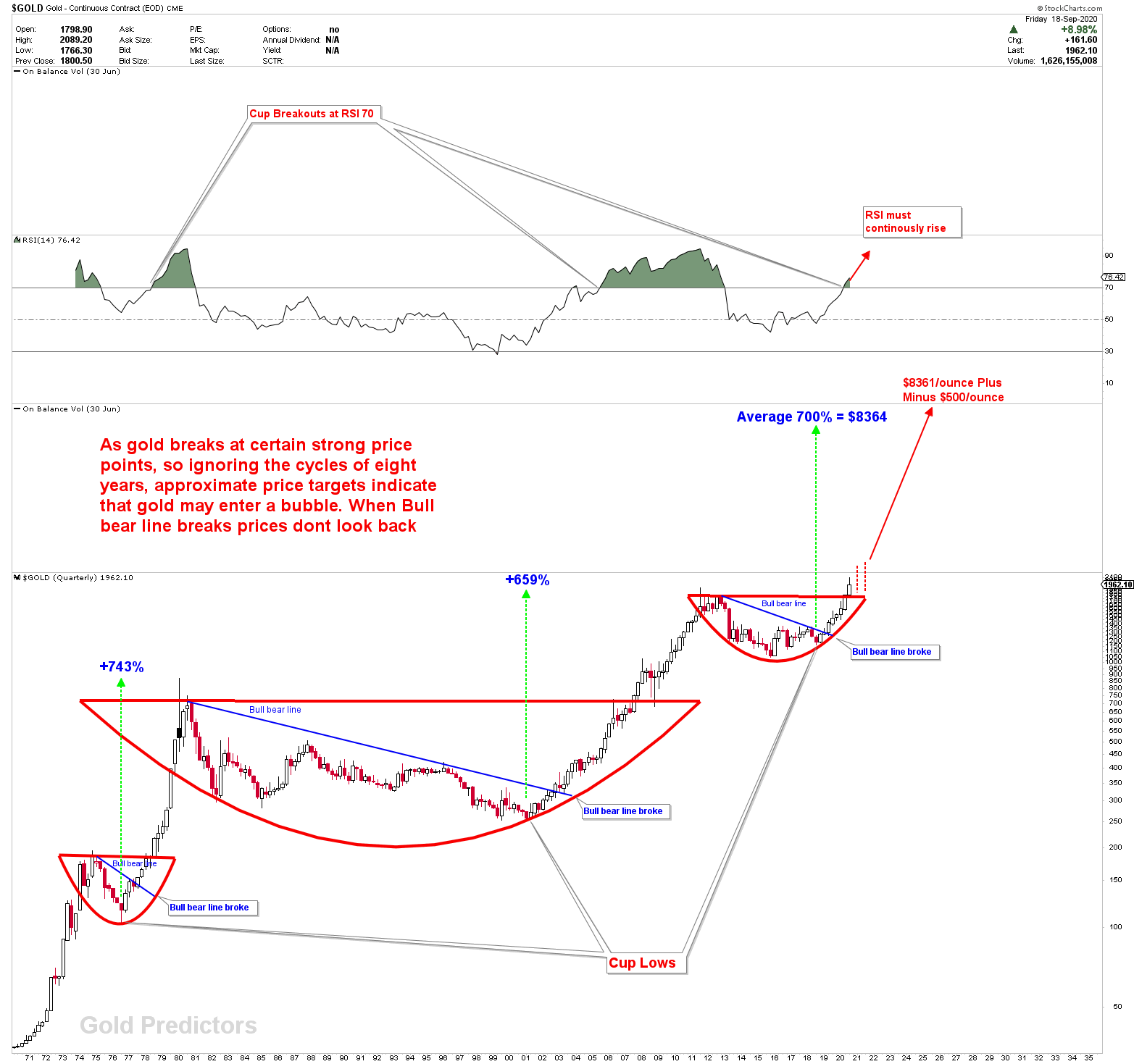Gold prices fell sharply in June 2021, but quickly recovered due to fundamental factors that are extremely supportive of commodity prices. The Fed's balance sheet is steadily growing in response to the need to support the US economy, which is a major factor in higher gold and silver prices in the near future.
Taxpayers must pay a large portion of the servicing payments because the US has a $23 trillion debt. CPI and PPI, on the other hand, are rising on a yearly basis, which is good news for gold and silver.
US Dollar Index Long-Term Outlook
The US dollar's yearly outlook is depicted in the chart below. The US dollar index is poised to fall on a larger scale, according to this chart. In 2020, the falling curve was reached, and the key reversal candle of 2020 indicates that the US dollar index is under tremendous pressure.
In the second half of 2021, it is likely that the US dollar index will fall. The US dollar is clearly moving in a 16-year cycle, as shown in the chart. The US dollar index reaches a peak every 16 years and then falls for the next 8 years to find support. The US dollar index is poised to fall after hitting a 16-year high in 2020.
The gold and silver markets must break higher because the US dollar index is negatively correlated with gold and silver prices
Gold Market Long-Term Outlook
The gold yearly chart below shows a bullish outlook for gold prices. If the neckline of the inverted head and shoulder is broken, the gold market will bubble out above the neckline.
The gold market is poised to explode towards $10,000 if there is any yearly close above $2300-$2500. However, if the price continues to rise, it will almost certainly encounter strong resistance in the $2300-$2500 range, with a starting price of $2100.
The two versions of necklines can be seen in a zoom out view of the gold market on a quarterly gold chart. In 2020, when gold reached $2070, one neckline was reached. In the $2120 region, this neckline faces stiff resistance. The second neckline is the exhaustion line, which was reached in 2011.
If gold prices start to resist above $2120, the market will most likely resist into the $2300-$2500 range, approaching the exhaustion line. Due to the long-term nature of these resistance barriers, large deviations on both sides of the numbers are permissible.
Will The Gold Market Break Higher?
The US dollar index is poised to fall, while the gold market is poised to rise, according to the above explanation. However, before any sharp rise, some overhead resistance must be overcome. If gold continues to rise, resistance will most likely be found at the above levels. If the rising inverted head and shoulder is broken at $2,300-$2,500, the gold market will explode to new all-time highs, aiming for the $8,000-$10,000 range.
In the quarterly gold chart below, this scenario is depicted as the cups in which the gold market broke out with an average price increase of 700%. Patterns repeat themselves, and prices stay on track. If the $2300-$2500 area is broken, the 700% gain calculated from the bottom of the 8-year cycle low will target the $8,000 area.
The RSI above 70 rule is supported by all of these patterns. According to RSI, the market could stay in the extreme overbought zone. All of these breakouts occurred during a period of extreme crisis, and the gold market is currently experiencing the COVID-19 crisis.
